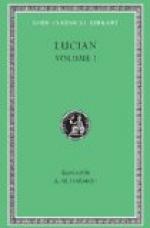The courts of justice have become helpless and paralyzed. Murder, violence and robbery are an every-day occurrence. It was learned by the Commission that fifty-three murders occurred in the months of September and October in one tribe only, and not one of the culprits was brought to justice. The Dawes Commission recommends that a large portion of the Indian reservation be annexed to Oklahoma; this action to be followed by forming that country into a Territory. But to accomplish this, it would be necessary that the consent of the Indians be obtained, and this is doubtful.
The statement that the Indians have cast aside their ancient weapons and adopted more modern ones, and that through the use of them, they are gradually extending their hunting grounds beyond the lines of their reservations, is false. The report of the Commission makes this clearly known. Throughout the West the Indians still trust to their bows and arrows. On the northwest coast most of the Indians live by hunting and fishing. They use principally the bow and arrow, knife, war club and lance. In the North Pacific Ocean are several islands inhabited only by Indians. In the Queen Charlotte and the Prince of Wales Archipelago is found one of the most remarkable races of aborigines on the American continent. These are the Haida tribes, and consist of strikingly intelligent Indians. They acquire knowledge readily; learn trades and exhibit much ingenuity in following the teachings of missionaries and traders. But for all that, they still cling with something bordering upon affection to the primitive weapons of their race.
During the long winter nights the old Indians seat themselves before the fire and carve bows, ornament club handles, and feather and point arrows. Perhaps in some of the tepees hang polished guns furnished by the Government, but they are more for ornament than use. This evening work is accompanied by the low croaking of some old Indian, who tells over again the legends, folk-lore and nursery tales of their grandfathers and grandmothers.
The Haida tribe is more rapidly advancing in civilization than any of its neighbors, yet they still carve and paint bows, arrows, club handles and paddles. The Indians still cling to other rude implements and take not kindly to metal ones. Rude knives are still used for skinning deer, especially by the old Indians. The axe, of course, is employed for cutting trees and excavating canoes and mortars. It has really taken the place of the stone chisel, yet many old men prefer burning the roots of the tree until it can be made to fall by giving it a few hacks with the rude stone hatchet.
In archery, the Indian has scarcely been excelled. With a quick eye and a powerful muscle, he sends the arrow as unerringly as the archers of olden time.




